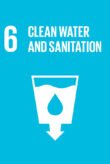Interdisciplinary collaboration between different sectors and nations
The significant reduction of carbon dioxide emissions on our planet by 2050 is an important climate goal of countries worldwide. At the same time, a significant increase in fuel consumption is expected in emerging countries such as India in the coming years. In order to do justice to climate protection nonetheless, there is an increasing focus on renewable energies. Green hydrogen has a particularly important key role to play here.
Our partner country India has a huge base for the production of green hydrogen. However, the physical and chemical properties of hydrogen require a good safety infrastructure. Hydrogen is highly flammable. Likewise, hydrogen as a future energy carrier brings with it many technical challenges, for which good metrological prerequisites must be in place. In our collaboration Metrology for green hydrogen in India, we support our partners in the safe, efficient and sustainable development of green hydrogen.
An Indo-German virtual conference on this topic will take place from 4 to 6 April, bringing together researchers, experts and industrial players. It is being organised by the International Measurement Confederation-Technical Committee (IMEKO), PTB and the Ministry for Economic Affairs and Climate Action. The German Federal Ministry for Economic Cooperation and Development is providing the funding. The advantages that the development of green hydrogen offers, the challenges that can be expected and the many aspects that need to be taken into account become clear when the topic is examined in more detail. Hydrogen is colorless, but a color code is defined to signify the production route of hydrogen. Green hydrogen denotes hydrogen produced through sustainable sources meaning the energy required to split water to form hydrogen and oxygen by electrolysis comes from renewable electricity, primarily through renewables like solar and wind. Green hydrogen plays a significant role in storing excess energy generated from these renewable sources. The energy stored in the form of green hydrogen is pivotal to the power-to-x strategy, where x can be, for example, gas, liquid, chemicals or electricity — that is, everything that happens in the value chain. Combining green hydrogen with carbon dioxide leads to many possibilities. One such opportunity finds its application in the energy, transportation, and shipping industries: synthetic e-fuels. Energy carriers such as green hydrogen and its derived renewable forms are positioned to lead the transition in these sectors. Every step from production to end-use of hydrogen has its limitations, considering its current state-of-the-art.
One such example is the electrolysis process, splitting water to produce hydrogen using renewable electricity. But the water source comes under scrutiny when sustainability is questioned. Coupled with this, increasing urban water demand and agriculture sectors pose a twin-challenge for industrial hydrogen production. A tropical region, as in some parts of India, with abundant solar energy also means a scarcity of water resources. One solution to this hindrance could be through seawater desalination. However, this brings additional shortcomings like membrane efficiency, brine water utilization, and the entire process efficiency. Seawater desalination is a different context, but the relation to green hydrogen and its challenges can be seen once the line is drawn. However, this also means research is to be done with the proper support infrastructure. For instance, the services that must support the production and utilization of green hydrogen, i.e. metrology, gas quality, and safety standards, all play a crucial role in enabling the technology to proliferate. A harmonized approach to these services and knowledge transfer with fellow countries enables quicker acceptance and understanding of global standards. In the end, all the research and services will hit the brakes if not backed by the right policies.
Over the last decade, India has witnessed an increase in energy consumption by 2.5 to 3.0 %. To tackle the rise and at the same time to commit to the reduction of carbon emissions without compromising on production targets is a challenge. Moreover, many factors at the policy level, strategic framework, and technical challenges will have to be tackled to deploy them in a structured roadmap. Green Hydrogen has stood out as one of the possible sustainable approaches to make the energy and transportation sector carbon-free. In this context, Europe has seen interest in adopting a Green Hydrogen strategy to decarbonize the relevant industries. This strategy has also found its place in the Indian context. The Indian government announced a covid stimulus package, leveraging clean energy for economic recovery and building resilience. Rescuing businesses, creating new jobs, and having sufficient fiscal capacity are crucial for making greener choices. The collective action of policymakers, industries and research institutions is inevitable for strategic public spending in building resilient, sustainable and low-cost energy solutions for the economy. Fostering dialogues with these groups is quintessential to ensuring global participation and cooperation. Ongoing globalization precludes isolated actions and encourages the flow of ideas and services across borders. With the proper steps from all sectors, the future for hydrogen does not look grey anymore. Instead, it seems optimistically green.
All interested parties are cordially invited to attend the conference Metrology for the deployment of green hydrogen and renewable fuels in India. The main focus will be on promoting safety standards, process optimisation, advanced measurement techniques for energy content, gas quality, legal metrology and hydrogen production and use. There will also be several sessions on alternative energy sources such as biogas, biofuels, synthetic and electric fuels and smart energy materials. More information is available at the following link:
https://www.imeko-gh2fuels.ptb.de
Image © istock
Credit: audioundwerbung








